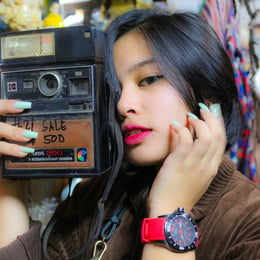The most authoritative answer in 2024
-
As an expert in environmental sustainability and waste management, I'm often asked about the specifics of recycling, particularly what can go into the blue recycling bin. It's a crucial question, as proper recycling practices are essential for reducing waste and conserving resources. Let's delve into the details.
Step 1: English Answer
The blue recycling bin is designed to collect a variety of recyclable materials that can be processed and turned back into new products. Here's a comprehensive list of what you can typically put in the blue bin:
1. Paper Products: This includes newspapers, magazines, office paper, cardboard, and paperboard. It's important to flatten boxes and remove any non-paper components like plastic windows from envelopes.
2. Plastic Containers: Look for the recycling symbol on the plastic item, which is usually accompanied by a number 1 through 7. This number indicates the type of plastic. Most recycling programs accept bottles and containers made of PET (#1), HDPE (#2), and sometimes other types like #3 (V), #4 (LDPE), and #5 (PP).
3. Glass Bottles and Jars: Clear, green, and brown glass are commonly accepted. Rinse them clean and remove any labels.
4. Metal and Aluminum Cans: These include beverage cans, food cans, and sometimes aerosol cans. They should be clean and dry.
5. Cartons: As mentioned, cartons such as soup cartons, soy milk cartons, juice boxes, and milk cartons are now often recyclable. These are made from a combination of paper and plastic and are coated on the inside to hold liquid. They should be thoroughly rinsed and flattened.
6. Empty Lids: Plastic lids from jars and metal lids from cans can also be recycled.
7.
Aluminum Bakeware: If it's disposable and made of aluminum, it can usually be recycled.
8.
Clean Foil: Crimped or crumpled clean aluminum foil can be recycled, but it's often best to check with your local recycling program as it can sometimes be a contaminant if not properly sorted.
9.
Plastic Bags: Some recycling programs accept clean plastic bags, but many do not. It's best to check with your local guidelines.
10.
Mixed Paper: This includes junk mail, brochures, and phone books. It's often advisable to bundle these together.
1
1. Egg Cartons: These are usually made from pulp and can be recycled with your paper products.
1
2. Wrapping Paper: As long as it's not shiny or metallic, most wrapping paper can be recycled.
1
3. Paper Towel and Tissue Paper: These items are generally not recyclable due to their low-quality fibers and potential contamination from bodily fluids.
1
4. Scrap Paper: Small pieces of scrap paper can be bundled or placed in a paper bag for recycling.
1
5. Greeting Cards: If they're made of paper and don't have any glitter or plastic components, they can be recycled.
1
6. Pizza Boxes: Controversial item; some recycling programs accept pizza boxes without food residue, while others do not.
When placing items in the blue bin, it's important to follow these guidelines:
- Rinse items as necessary to remove food residue.
- Flatten boxes and other bulky items to save space.
- Check local guidelines as recycling rules can vary by municipality.
- Do not place non-recyclable items or contaminated items in the bin as they can disrupt the recycling process.
By following these steps, you're contributing to a more sustainable environment and helping to preserve our planet's resources.
**read more >>+149932024-05-26 03:37:29 -

-
Lily Carter——Studied at Oxford University, Lives in London. Passionate about literature and currently working as an editor for a publishing company.
Cartons can now be included in your blue bin! Cartons include soup cartons, soy milk cartons, juice boxes, milk cartons, etc. Empty glass bottles and jars are recyclable, along with their lids and empty metal and aluminum beverage and food containers can be recycled, as can disposable aluminum bake ware and clean foil.read more >>+119962023-06-14 14:08:54
About “蓝色、纸盒、纸箱”,people ask:
- 79回复Can I put garden waste in my green bin 2024?
- 29回复What can you put in the GREY bin 2024?
- 50回复What do you put in the red bin 2024?
- 14回复What goes in a blue recycling bin 2024?
- 32回复Is toilet paper good for composting 2024?
- 73回复What do you put in your green bin 2024?
- 38回复What do you put in the yellow recycling bin 2024?
- 28回复What do you put in the black bin 2024?
- 58回复What can you put in a yellow recycling bin 2024?
- 30回复Can you put glass in the blue bin 2024?
- 42回复Can I put shredded paper in my recycling bin 2024?
- 10回复Can you recycle a straw 2024?
- 73回复What color bin does plastic go in 2024?
- 11回复Can you recycle black bin bags 2024?
- 71回复What do you do with shredded paper 2024?
READ MORE:
- +1318What do you put in the recycle bin 2024?
- +1210Is it OK to put shredded paper in compost 2024?
- +1170Can you put shredded paper in the recycling bin 2024?
- +1265What do you put in the black bin 2024?
- +1534What do you put in the blue bin 2024?
- +1329What color bin does plastic go in 2024?
- +1447What can you put in the GREY bin 2024?
- +1752What do you put in the green bin 2024?
- +1651Can you put shredded paper in the green bin 2024?
- +1518Can I put garden waste in my green bin 2024?
- +1533What do you put in your green bin 2024?
- +1114Can Epsom salts be used to make magnesium oil 2024?
- +1459Is fish oil good for hair growth 2024?
- +1638Is magnesium oil good for hair loss 2024?
- +1337What vitamins cause hair loss 2024?
QuesHub is a place where questions meet answers, it is more authentic than Quora, but you still need to discern the answers provided by the respondents.







